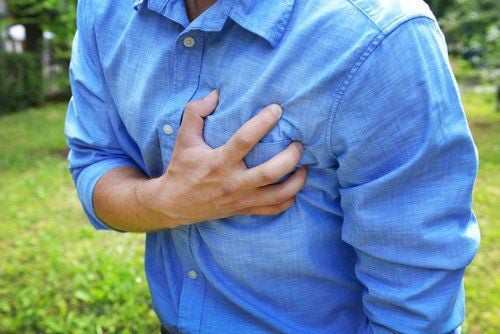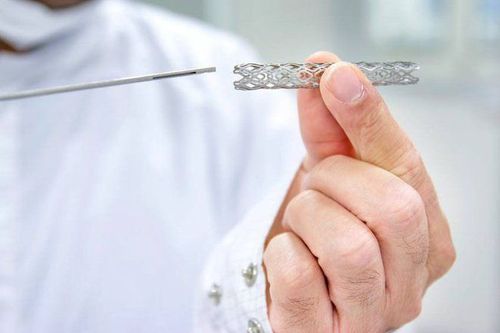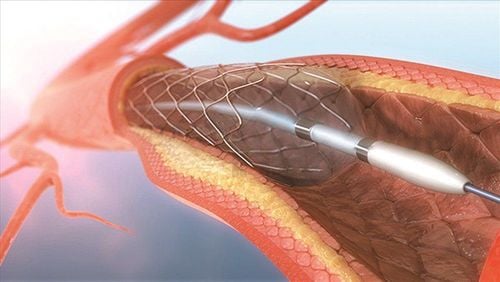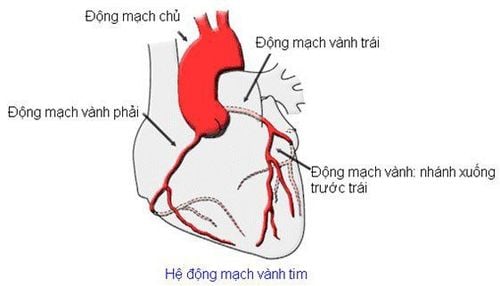This is an automatically translated article.
The article was professionally consulted by a Doctor of Vinmec Da Nang International General Hospital.Coronary angiography is a procedure used for the morphological evaluation of the coronary artery system; Help identify the lesions of the coronary system to have timely diagnosis and treatment orientations for patients.
1. What is coronary angiography?
Coronary arteries are arteries that supply blood to the heart. Coronary angiography is a procedure to determine the coronary condition, thereby helping to diagnose coronary artery diseases such as stenosis, occlusion, dissection, thrombosis...Coronary angiography technique is conducted with the using specialized catheters to introduce contrast material into the coronary artery lumen, thereby displaying images of the coronary artery system on the bright screen, based on these images, it is possible to evaluate the lesions of the coronary arteries. coronary artery system such as stenosis, occlusion, dissection, thrombosis...
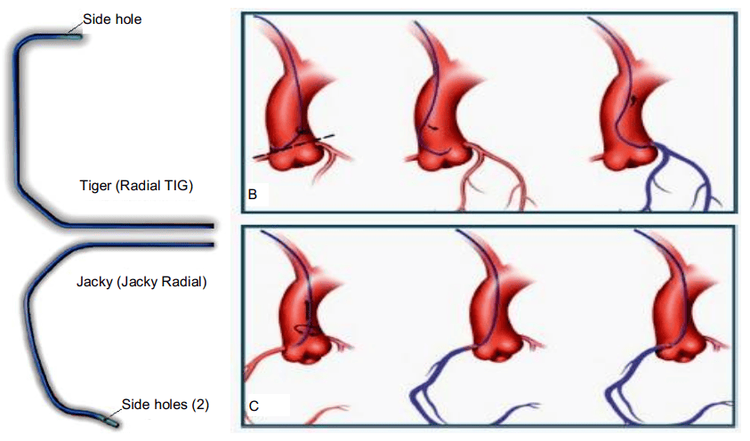
Dụng cụ chụp động mạch vành
2. Indications for coronary angiography
Patients are prescribed coronary angiography by the doctor in the following cases:
Acute myocardial infarction with ST elevation. Unstable chest pain and non-ST-elevation myocardial infarction. Stable angina: Coronary angiography to consider intervention when noninvasive investigations reveal high risk or large areas of myocardial ischemia, or patients on optimal medical therapy fail to control symptoms. proof. May be indicated in patients with suspected coronary artery disease or known coronary artery disease. Coronary angiography to check before heart surgery, large blood vessels in the elderly (men > 45; women > 50). Coronary angiography checks before noncardiac surgery in patients with suspected coronary artery disease. After the emergency, the circulation stopped outside the hospital. Chest pain that recurs after coronary intervention or after surgery for aortic-coronary bypass. Heart failure of unknown cause. Coronary angiography checks for coronary artery abnormalities when there are abnormalities on multi-segment computed tomography of the coronary arteries. Patients with dangerous arrhythmias (ventricular tachycardia, atrioventricular block, .. .). Some other special cases (occupation, high-risk lifestyle; combination of other exploration,...).
Trắc nghiệm: Huyết áp của bạn có đang thực sự tốt?
Huyết áp cao hay thấp đều ảnh hưởng đến tình trạng sức khỏe con người. Để biết tình trạng huyết áp của bạn có thực sự tốt không, hãy làm bài trắc nghiệm sau đây để đánh giá.3. Relative contraindications
Contraindications to coronary angiography include:
Patients with severe infections. There is a history of shock to contrast or seafood. Patients with severe renal impairment (renal function <30ml/min/m2) or with high blood creatinine levels Pregnant or suspected pregnant women. Caution should be exercised in patients with severe asthma and unstable hyperthyroidism.
4. Coronary angiography procedure
4.1. Prepare the patient
Patients should fast for 4 hours before the procedure. Do not use stimulants such as tea, coffee and drugs that affect the heart rate.4.2.Steps to proceed
Coronary angiography can be done in 2 ways:Coronary angiography through the radial artery. Coronary angiography through the femoral artery. Note: After coronary angiography, it is necessary to drink a lot of water for 1-2 days to eliminate all contrast in the urinary tract.
5. Complications and side effects
Early reactions occurring within 1 hour after contrast injection: Allergies, vomiting, laryngeal edema, anaphylaxis.
Dị ứng là 1 trong những phản ứng sau khi tiêm thuốc phản quang
Severe arrhythmias: Sinus bradycardia, sinus arrest, ventricular tachycardia, ventricular fibrillation, ... Immediately remove the catheter from the coronary artery, shock or use drugs to control the above arrhythmias.
Excessive radial vasospasm: Inject 100-200 μg of nitroglycerin into the radial artery, gently withdraw the imaging catheter and consider transfemoral artery angiography.
Acute coronary artery occlusion due to: Causing coronary artery wall separation; Thrombosis should be detected and corrected immediately by interventional measures such as balloon angioplasty, stenting, thrombectomy, etc. If it is due to air injection into the coronary artery, it should be detected early, can be aspirated, relieve pain, and prevent thrombosis. full winter.
Perforation, rupture of coronary artery: Because it is too rough, it is an emergency requiring pericardial aspiration, controlling the rupture with balloons, stents covered, and emergency surgery when necessary.
Follow up arterial puncture after sheath removal to manage bleeding complications.
Injury to the radial or brachial vasculature causing perforation, presenting the patient with pain and swelling of the forearm: Arm-brachial compression does not allow further bleeding. An angiogram can be taken to locate the lesion and use a blood pressure cuff to apply pressure within 10-15 minutes...
Renal function failure due to contrast.
Coronary angiography is the gold standard to identify coronary occlusion, this is the most accurate diagnostic method. During coronary angiography, other interventions such as catheterization or percutaneous coronary intervention may be performed.
However, this is also a rather expensive procedure, the risk of exposure to radiation and the use of contrast agents. Therefore, doctors need to weigh the benefits before taking coronary angiography for patients.
In April & May 2021, when there is a need for cardiovascular examination and treatment at Vinmec International General Hospital, customers will enjoy double incentives:
- Free specialist examination and 50% discount many cardiology packages such as:
+ Basic Cardiovascular Screening Package
+ Hypertension Checkup Package
+ Heart Failure Checkup Package
+ Coronary Cardiovascular Examination Package
+ Comprehensive Cardiovascular Checkup Package
- 50% off cost Fees for customers with post-examination treatment indications. The program is limited to the corresponding technique of each hospital and to customers who perform this treatment technique for the first time at Vinmec.
Please dial HOTLINE for more information or register for an appointment HERE. Download MyVinmec app to make appointments faster and to manage your bookings easily.




